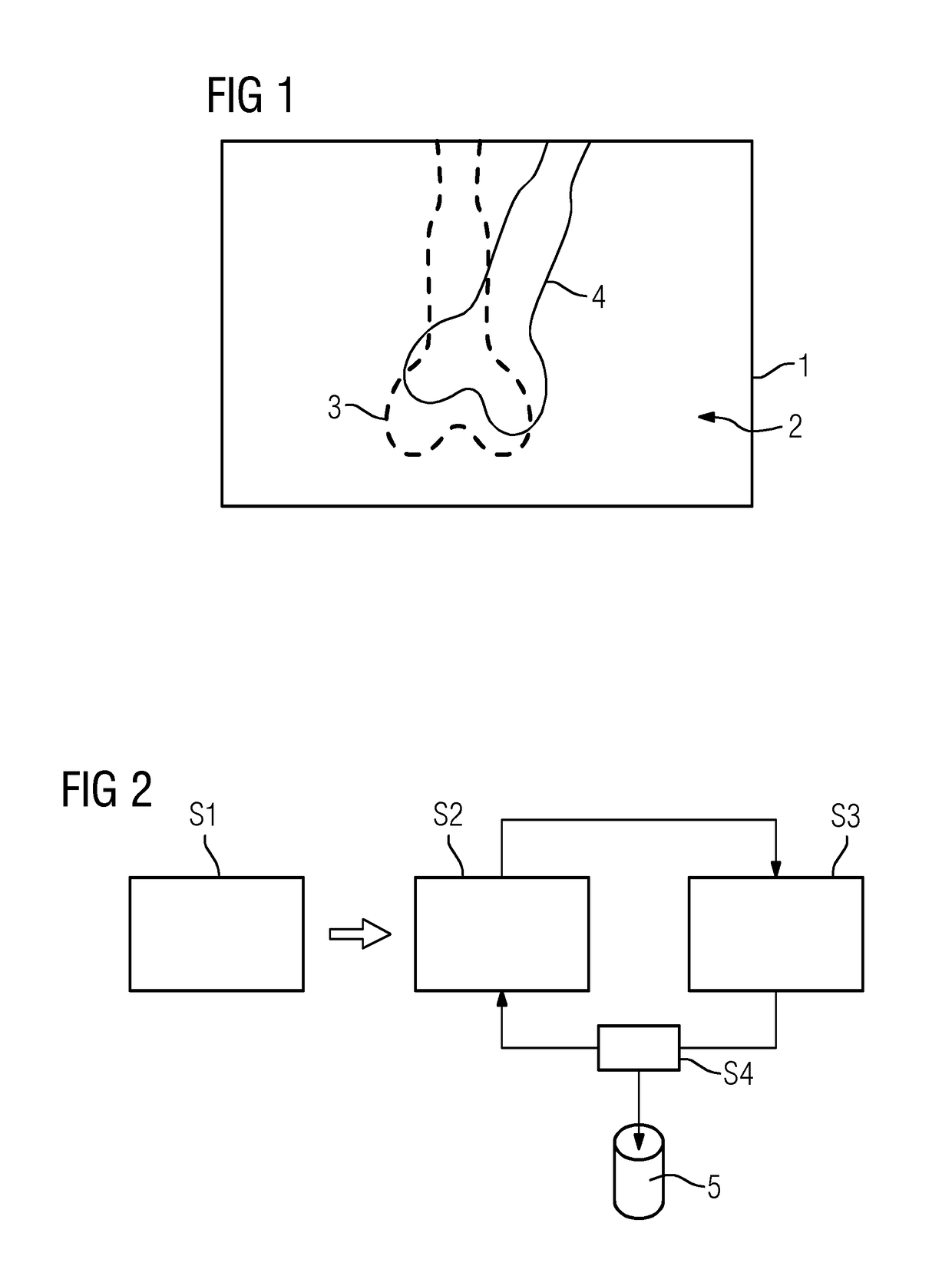2D/3D Registration
a technology of 2d/3d and registration, applied in the field of 2d/3d registration, can solve the problems of prejudiced motion estimation and unnecessary computational operations, and achieve the effects of less sensitiveness, improved resolution, and increased area
- Summary
- Abstract
- Description
- Claims
- Application Information
AI Technical Summary
Benefits of technology
Problems solved by technology
Method used
Image
Examples
Embodiment Construction
[0070]FIG. 1 shows by way of example and in a schematic representation an overlay image 1 from a three-dimensional image dataset and an x-ray image, wherein the x-ray image 2 forms the basis onto which the information 3 of the three-dimensional image dataset is superimposed as an overlay. A shadow-like, low-resolution anatomical structure 4, in this case a bone, is discernible in the x-ray image 2. The information 3 relating to the same anatomical structure 4, the overlaying being brought about using a coarse initial transformation, hence a coarse 2D / 3D registration, was superimposed from the three-dimensional image dataset. It is apparent that the anatomical structure according to the information 3 is slightly skewed and translated relative to the visible anatomical structure 4 of the x-ray image 2. The below-described exemplary embodiment of the method now aims to determine a registration transformation that leads to an accurate overlaying of said anatomical structures, hence to a...
PUM
 Login to View More
Login to View More Abstract
Description
Claims
Application Information
 Login to View More
Login to View More - R&D
- Intellectual Property
- Life Sciences
- Materials
- Tech Scout
- Unparalleled Data Quality
- Higher Quality Content
- 60% Fewer Hallucinations
Browse by: Latest US Patents, China's latest patents, Technical Efficacy Thesaurus, Application Domain, Technology Topic, Popular Technical Reports.
© 2025 PatSnap. All rights reserved.Legal|Privacy policy|Modern Slavery Act Transparency Statement|Sitemap|About US| Contact US: help@patsnap.com



